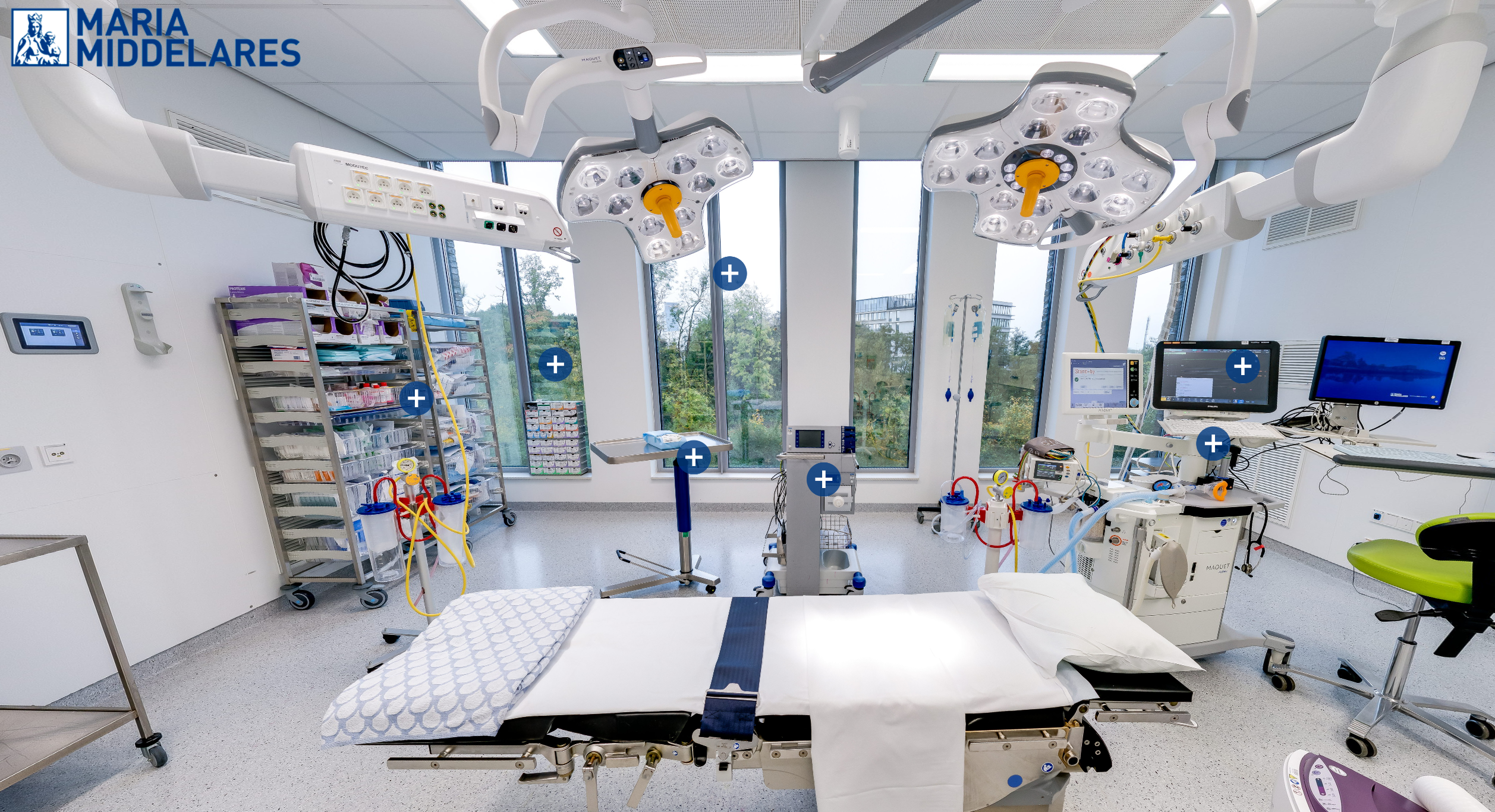General anaesthesia
What is it?
What is it?This form of anaesthesia renders the patient completely unconscious and free of pain.
General anaesthesia can be administered in two ways:
- It is preferable to use an IV inserted into a blood vessel, also referred to as a peripheral intravenous line. Using an IV assures that, at any time, we can administer medications safely. The only disadvantage for the patient is that he or she will be poked with a needle before the anaesthesia takes effect.
- If placing an IV is difficult, mask anaesthesia can be performed instead. An IV is preferable as it enables the immediate administration of medication. What’s more, the experience of inhaling anaesthetic gas is typically considered unpleasant.
Process
ProcessFrom the moment that the patient falls asleep, the anaesthesiologist maintains the anaesthesia at a sufficient level for the duration of the surgical procedure.
Anaesthetic monitors continuously follow and record your blood pressure, blood oxygen level and heart rate. This allows the anaesthesiologist to customise the anaesthesia to your needs during the procedure.

A virtual visit to the operating facility at St Vincent General Hospital in Deinze is not possible.
Centres and specialist areas
Centres and specialist areas
Something wrong or unclear on this page? Report it.
Latest publication date: 13/08/2024
Supervising author: Dr Vanoverschelde Henk




